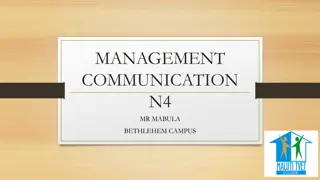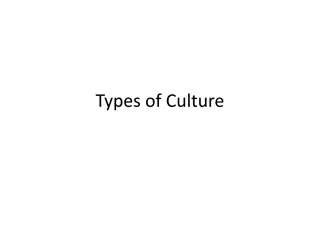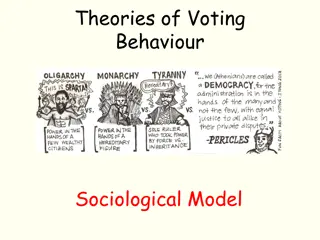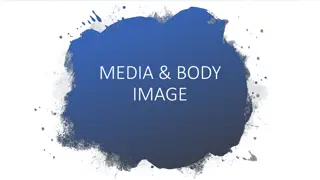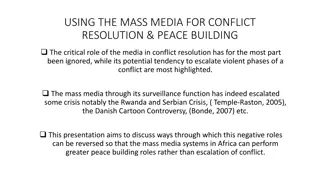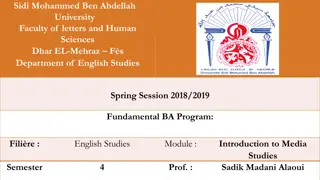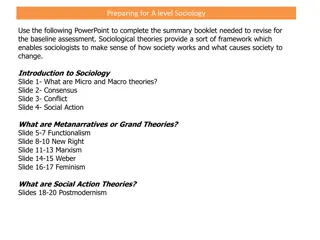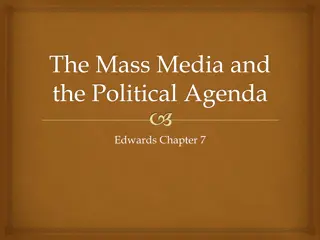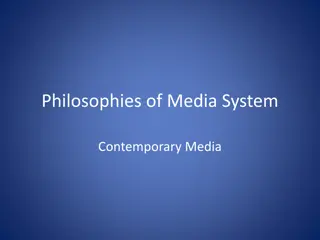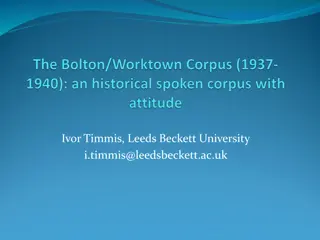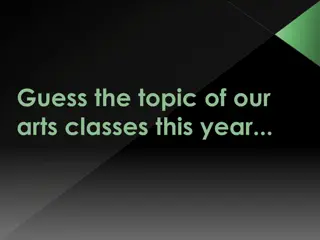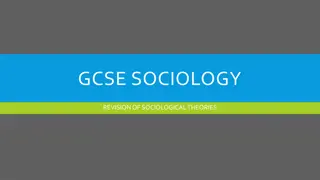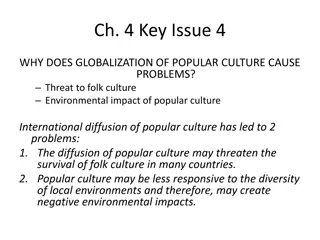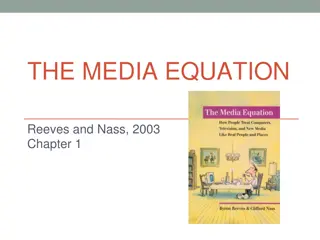Understanding Mass Media and Popular Culture: The Role, Influence, and Sociological Theories
Mass media encompasses various forms of communication that reach a broad audience, influencing culture and shaping perceptions of celebrity. Sociological theories, such as Limited Effects Theory and Culturist Theory, explain how media interacts with society. Popular culture refers to widely consumed cultural products reflecting the spirit of the times. Explore the dynamics of media and its impact on society.
Download Presentation

Please find below an Image/Link to download the presentation.
The content on the website is provided AS IS for your information and personal use only. It may not be sold, licensed, or shared on other websites without obtaining consent from the author. Download presentation by click this link. If you encounter any issues during the download, it is possible that the publisher has removed the file from their server.
E N D
Presentation Transcript
Mass Media and Popular Culture IB Language and Literature 2 Mr. Marusevich
The Role and Influence of Mass Media Mass media is communication whether written, broadcast, or spoken that reaches a large audience. This includes television, radio, advertising, movies, the Internet, newspapers, magazines, and so forth. Mediated culture = where media reflects and creates the culture. Mass media makes possible the concept of celebrity: without the ability of movies, magazines, and news media to reach across thousands of miles, people could not become famous. In fact, only political and business leaders, as well as the few notorious outlaws, were famous in the past. Only recently, have actors, singers, and other social elites become celebrities or stars.
Sociological Theories on the Role of Mass Media (prior to the Information Age) Limited Effects Theory: People generally choose what to watch or read based on what they already believe; media exerts a negligible influence. This concept was theorized when the availability and dominance of media was far less widespread. Class-Dominant Theory: Media reflects and projects the view of a minority elite, which controls it. produce media comprise this elite. Many experts are concerned that a few people in society have the ability to manipulate what people can see or hear. Advertising also plays a huge role in what a media outlet will air, so this can reflect the ideals/agenda of a sponsor. If something is broadcast that goes against a sponsor s agenda, the media outlet can lose a considerable amount of advertising funds. The owners of corporations that
Sociological Theories on the Role of Mass Media - Continued Culturist Theory: This theory was developed in the late 80s and early 90s. It combines the previous two theories and claims that people interact with media to create their own meanings out of the images/messages that are broadcast. Audiences play a more active role in relation with mass media. Researchers theorize that people approach media texts and interpret them based on their own knowledge and experience. Therefore, culturalist theorists claim that, while a few elite people may exert significant control over what information media outlets produce, personal perspectives play a very important role in how audiences interpret media.
What is Pop Culture? According to Ashley Crossman, Popular culture (or "pop culture") refers in general to the traditions and material culture of a particular society. Pop culture refers to cultural products such as music, art, literature, fashion, dance, film, cyber culture, television, and radio that are consumed by the majority of a society's population. The term "popular culture" was coined in the mid-19th century, and it referred to the cultural traditions of the people, in contrast to the "official culture" of the state or governing classes. Pop culture is often considered a more superficial or lesser type of artistic expression. Zeitgeist: a concept in German philosophy, meaning "spirit of the age" or "spirit of the times".
What are Pop Culture Texts ? Movies Titanic, Star Wars, Harry Potter Music The Beatles, Baby Shark, and Gangnam Style Books I am Malala, The Hunger Games Television Game of Thrones, Friends, The Office Sports Loss of Kobe Bryant, Super Bowl Social Media The dress, memes, TikTok Video Games Call of Duty, GTA V Corporate Brands Coca Cola, McDonald s
Fads, Trends, and Icons in Popular Culture Fad: An intense and widely shared enthusiasm for something, especially one that is short-lived and without basis in the object's qualities; a craze. Example - YOLO Trend: A trend is a general direction into which something is changing, developing, or veering toward. A fad can develop into a trend, but not all fads become trends. Trends last longer than fads. Example iPhones in the latter 2000s Icon: A cultural icon can be a symbol, logo, picture, name, face, person, building, or other image. It is easily recognized and generally represents an object or idea with great cultural significance to a wide cultural group. What are some fads, trends, and icons that you can think from the past ten years?
Understanding Humor in Pop Culture Once something enters the pop culture pantheon, it is often made fun of using certain humorous techniques. Saturday Night Live is a prime example of poking fun at timely and relevant pop culture moments. Because the show is live and produced within a week, it is a perfect vehicle to mock pop culture trends before they fade from public consciousness. This can be done through satire, parody, or spoof. Satire: the use of humor, irony, exaggeration, or ridicule to expose and criticize people's stupidity or vices, particularly in the context of contemporary politics and other topical issues. (Please see the two major forms of satire.) Parody: An imitation of the style of a particular writer, artist, or genre with deliberate exaggeration for comic effect. Try to find an example of a satire and a parody and how they differ.
A Tale of Two Satires Horatian satire--After the Roman satirist Horace: Satire in which the voice is indulgent, tolerant, amused, and witty. The speaker playfully ridicules the absurdities and follies of human beings, government bureaucracy, current societal issues. The overall point is to be humorous (not bitter and angry). Juvenalian satire--After the Roman satirist Juvenal: Formal satire in which the speaker attacks the vices and errors of society with contempt and indignation. Juvenalian satire strongly contrasts to Horatian satire. It sets out to rile feathers and incite outrage at current societal trends.



